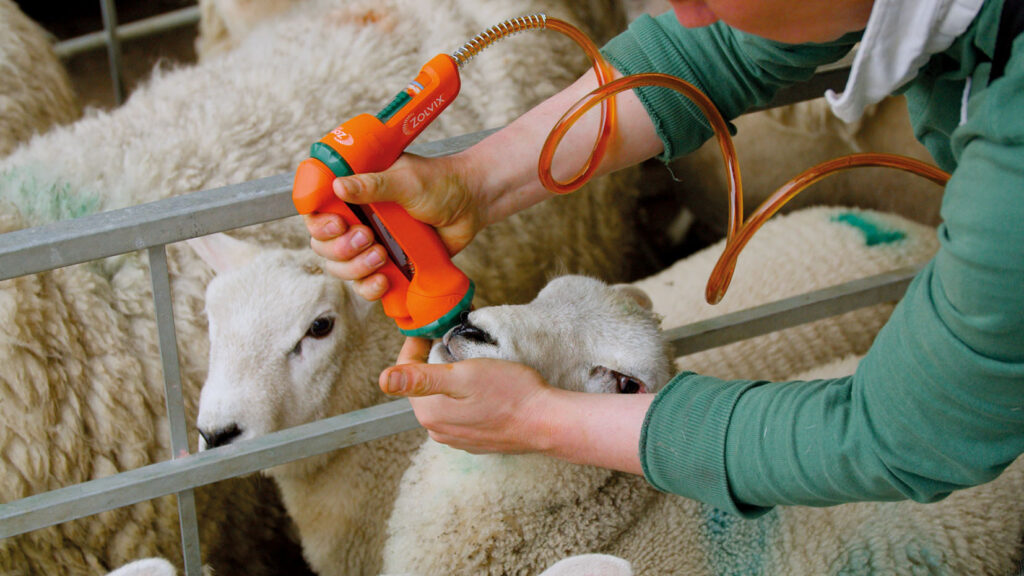Managing wormer resistance is key to flock health planning
26th September 2022
Wormer resistance presents a growing threat to the sheep sector and has prompted Powys-based shepherd Ernie Richards to implement a more sustainable worming programme that supports flock performance while preserving wormer efficacy.
Mr Richards runs a closed flock of 1,000 pedigree Lleyns at Wernoog Farm, Powys and ensures flock health is always at the top of his agenda.
“As sheep are our only form of income, we have very much all our eggs in one basket. Therefore, a high health status across our flock is crucial to ensure we’re maximising production levels and achieving good returns on investment.
“When flock health planning, effective worm control is very important and after working closely with our vet, we identified a wormer resistance issue. This allowed us to act early to slow the rate at which resistance is building-up,” explains Mr Richards.
Reducing the resistance risk
Wider industry data shows that, in the last 10 years, the number of reports of resistance to the three older classes of wormer has been increasing. In one study, 94% of farms have been found to have resistance to white wormers, 68% to yellow wormers, 51% to ivermectin and 19% to moxidectin, with just 2% of farms with no detectable resistance.
Mr Richards explains that concern around these growing resistance levels drove him to carry out tests at Wernoog Farm, which subsequently unveiled that like many other farms, they too had a problem.
“In order to help prevent resistance from developing further and impacting our flock performance, we’re working closer with our vet to develop a suitable worming programme that supports flock performance, while preserving the efficacy of the main groups of wormers within our regime,” he explains.
A rise in wormer resistance can be significantly increased with repeated use of wormers throughout the year when they may not be needed. To avoid this, Mr Richards conducts regular faecal egg counts to determine the need for treatment.
“These counts help us to check the level of worm burdens within the lambs and ensure we’re only worming when necessary.”
Increasing lamb performance
Part of the updated worming plan at Wernoog Farm includes the use of Zolvix at key points in the year. Mr Richards explains that this helps achieve complete worm control for all lambs, making sure no resistant worms are left behind that could hinder health and performance.
“We have used Zolvix for several years, but in the past 12 months have made a concerted effort to use it as a form of resistance prevention, to help prolong the efficacy of the other wormer groups we use,” he explains.
Zolvix is a group 4, broad spectrum anthelmintic, containing the active monepantel. SCOPS best practice guidance encourages the use of a group 4 at two key points; as a mid-late season break dose for lambs and as a quarantine treatment for all incoming sheep.
Typically, Mr Richards chooses to administer Zolvix towards the end of August or early in September.
“We’ve found that by following this routine and treating at the end of summer when our FECs often show a heavy worm burden, there has been a marked improvement in our lambs’ growth rates and performance into the late autumn and winter months,” explains Mr Richards.
“It’s also worth noting, that when working out dose rates, we always ensure we weigh the heaviest lambs. This then guarantees we’re dosing correctly and none of the flock are being under dosed as this can also increase the build-up of resistance.”
Quarantine treatment
As a closed flock, Mr Richards does not buy in any replacement lambs or ewes but does annually bring in replacement rams. All new rams are treated with Zolvix and then quarantined for 24-48 hours to ensure that they do not bring in any resistant worms. After being quarantined all new stock is turned out on dirty pastures to dilute the impact of any surviving worms.
“Strategically incorporating the use of a group 4 wormer into our worming plan has definitely delivered a notable increase in lamb performance. In addition, we believe it’s helping to increase the effective lifespan of the older group 1, 2 and 3 wormers which means that they can still be effectively used at certain times,” concludes Mr Richards.
Why should we act to prevent worm resistance?
Anthelmintic resistance is one of the biggest challenges to the health and profitability of sheep flocks and affects the entire industry. As the impact of resistant worms remains invisible until levels reach the tipping point, it is important to include a newer group 4 active in worm control plans now. Acting before there is an obvious problem will help maintain the efficacy of wormers for the future, as well as allowing lambs to achieve their full growth potential.

